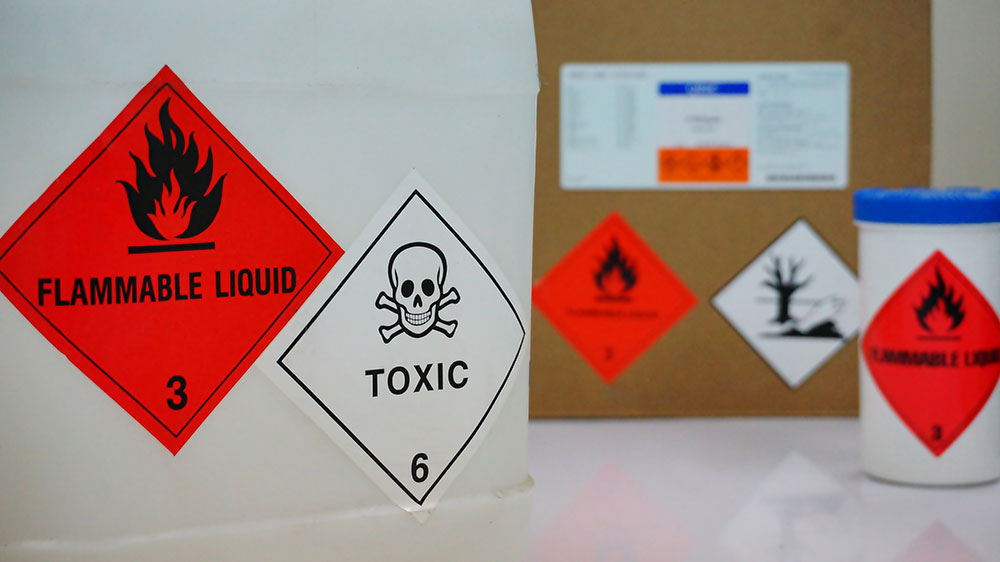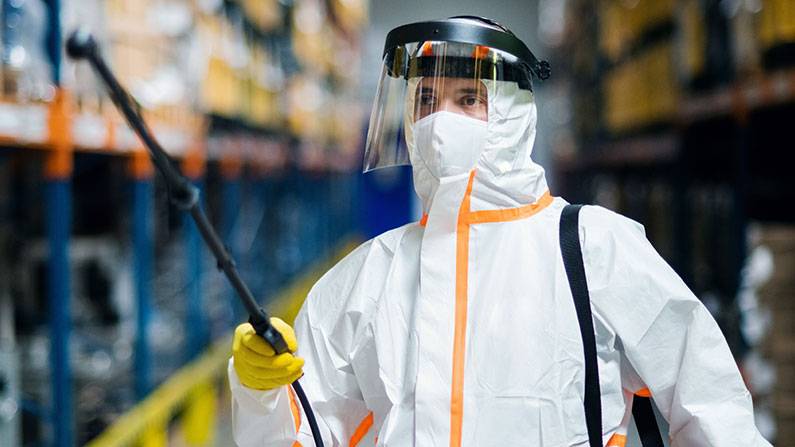How to Stay Safe When Working with Chemicals
Each workplace should aim to be safe and healthy for everyone, including employees, clients, and employers. When it comes to working with chemicals, there are a lot of risks involved. Businesses know it is a smart choice to care for the safety of the workers handling these chemicals. It not only helps reduce costs but also improves reputation.
The most important benefit is that untoward accidents can be prevented. When employees know that they are safe, they will feel content and happy, which boosts productivity.
Also, potential harm to the environment can be reduced. It’s all about understanding the correct ways of working with chemicals.
The Duties of Employers and Employees in Chemical Safety
Everyone should take part in maintaining a safe workplace. Chemicals are often dangerous, and one accident can turn into a catastrophic event. Both employees and employers should know about their key duties based on applicable health and safety legislation.
Employers should:
- Assess the risk levels of chemicals to employees and other people as well
- Figure out which substances are hazardous in the workplace
- Control exposure to these substances as much as possible
- Create a plan in dealing with emergencies and accidents
- Train and educate employees regarding these chemicals
- Perform regular health surveillance
Meanwhile, employees are required to do the following:
- Work with the employer, especially in obeying rules and procedures
- Report any issues right away, such as leakage, defects in plant or equipment used in the workplace
- Relay any incident or accident that may have led to the spread of dangerous substance
By understanding these duties, it will be much easier to manage chemical safety onsite.
The Steps to Chemical Safety
The best way to get started is to familiarise yourself with the hazard. Whether you are an employer or employee, you should identify the chemicals in the workplace, along with the dangers associated with them. From there, you can assess the risk involved to create a system that can help control exposure.
In many instances, exposure cannot be prevented, but it can be controlled. Chemicals are present everywhere, even in the cleanest offices. Most of the time, employees are routinely exposed to printing inks and toners. Paint, adhesives, and cleaning chemicals abound as well.
You do not have to work in a laboratory to be at risk. Therefore, everyone should pay attention to procedures that will help reduce spills and other problems and their effects on the body.
Increasing safety in the workplace requires adherence to a set of safety procedures, including:
- Everyone should follow the protocol.Many employees are not enthusiastic about dealing with complicated rules. It is the job of the employer to make them understand and accept that following these protocols are a part of their duties. From reading the instructions to knowing the composition of the chemicals, employees should know what they need to do.
- The workplace should be clean and tidy.It is much easier to prevent spills and accidents when the workplace is clean. A dirty and cluttered desk, for example, can easily lead to mismanagement of chemicals. Also, employees can easily trip and fall if there are wires on the floor. What if these employees were carrying delicate containers with chemicals in them? Regular cleaning is worth the time and expense, mainly because it is effective in helping avoid accidents.
- Label items correctly.One big mistake that typically happens in the workplace is the incorrect labelling of certain chemicals. Worse, some are not labelled at all. It can be remedied quite easily by merely using sticky notes. Of course, it is much better to categorise with clear names of the chemicals properly.
With the abovementioned steps, you can help keep the chemicals contained, and the workers are safe from harm.
The Importance of Personal Protective Equipment
Chemicals exist in different forms, including liquids, powders, vapours, mists, and dust. Some can have a low impact, but others can potentially cause harm.
Resins, glues, solvents, dust from wood machining, fumes from soldering, and carbon monoxide from motor exhausts are all considered dangerous to health. They can have various effects on the body, including:
- Brain and nervous system damage due to mercury, lead, and pesticide exposure
- Dryness to pain due to irritation of the eyes, throat, or nose because of welding fumes and acid mists
- Lung damage due to asbestos, which can cause lung cancer
- Asthma induced by irritants, including acids that can burn the airways
- Asthma due to allergies from flour dust or wood dust
- Liver damage to those continually exposed to vinyl chloride
- Bladder damage with regular exposure to dyes, which can also result in bladder cancer
- Skin allergies, such as allergic contact dermatitis because of nickel or latex
- Bone marrow and blood issues due to benzene exposure from petrol fumes
Chemicals enter the body in various ways. They can be inhaled, may pass through the skin, or accidentally ingested. In some cases, workers can get punctured. For example, a needle cut with some chemical on it can go to the bloodstream.
While these dangers may not be prevented entirely, wearing personal protective equipment (PPE) can reduce the severity of an accident. In some cases, the equipment can also help lower the number of hazardous incidents.
Personal protective equipment will always be deemed necessary in workplaces where employees handle chemicals. However, they should be treated as the last line of defence. No employer and employee should regard them as an alternative to staying safe using suitable control measures. The right PPE can provide enough protection, which should prevent or lower the possible risks from chemicals.
There are different types of PPE available. Many of them are useful to anyone who handles and works with chemicals. The following includes a list of protective equipment that employees should wear at a laboratory or anywhere where chemicals are present:
- GogglesSplash goggles are a type of PPE that cover the eyes completely, unlike other types of eyewear, such as prescription glasses. Therefore, goggles can provide adequate protection for the eyes. Employees should wear them whenever there is a high risk of chemical splashing. If the workstation deals with heavier splashing, it should be required to wear additional items for protecting the face. For example, you can wear a face shield, aside from the goggles.
- Protective ClothingClothing should be tight yet comfortable for the wearer. It should also never restrict movement. Even when wearing protective garb, you must have full control of your body. At the same time, it should provide ample cover, so the chemicals do not get spilled on the skin in case of splashes.
Many workplaces, including laboratories, make sure that female employees refrain from wearing a dress or skirt. These pieces of clothing do not give any protection at all. Loose clothes may be comfortable, but they do not protect the body when working with chemicals.
Jewellery, including necklaces and rings, should be removed inside the laboratory. Corrosive chemicals will only ruin them, and there is a risk that they will fall into the chemical or its container. There is also the possibility of electric shock.
- ApronAprons are not only chefs and cooks. They are made with fire-resistant material that can also prevent damage from chemical splashes. A lab coat can be worn in place of an apron. Some people prefer the convenience that aprons offer because they can easily be removed.
- Close-Toed ShoesNever wear sandals or any open-toed piece of footwear when you are working with chemicals. You are only exposing your feet to possible damage. If the chemical is dangerous, you can end up with a much bigger problem.
The recommended material is leather or artificial leather, particularly the top of the shoes. Leather can provide the protection your feet need. Avoid wearing shoes with heads made of cloth or any type of woven material. They invite chemicals in, which can have adverse effects on the skin. High heels should also be avoided, so you do not worry about tripping.
- GlovesYou can protect your hands using gloves. This PPE is made of different materials, including butyl rubber, neoprene, and latex. Using leather and cloth gloves is not helpful if you will handle chemicals. Before you put on gloves, ensure there are no holes or cracks. It is also unwise to reuse dirty gloves, especially those that you have previously used with toxic items.
If you have long hair, tie it into a ponytail or a bun, so it does not get in the way. Some chemicals can quickly burn your hair, or it could easily get stuck.
With a prepared worksite, knowledgeable employees, and PPE, accidents may be prevented in the workplace.


